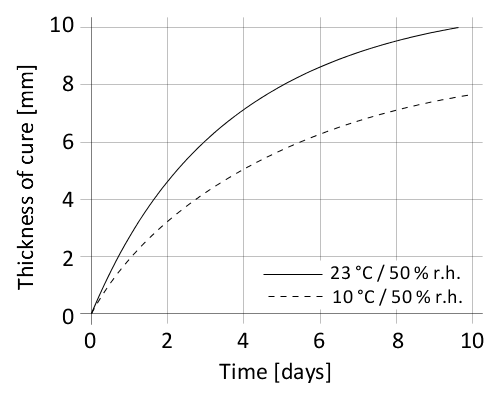
Sikaflex®-515
Sikaflex®-515 is a 1-component Silane Terminated Polymer (STP) sealant that cures on exposure to atmospheric humidity. It bonds well to a wide variety of bonding surfaces such as metals, ABS, PC, FRP and wood with no need for special treatment and is suitable for most interior and exterior applications.
- Fast skinning
- Bonds well to a wide variety of substrates without the need for special pre-treatment
- Free of isocyanates, solvents, silicones and PVC
- Excellent workability
- Can be painted
- Low odor
PRODUCT BENEFITS
- Fast skinning
- Bonds well to a wide variety of substrates without the need for special pre-treatment
- Free of isocyanates, solvents, silicones and PVC
- Excellent workability
- Can be painted
- Low odor
Areas of Application
Sikaflex®-515 is a multi-purpose sealant which is suitable for most industrial sealing applications. The product possesses very good sealing properties for interior and exterior applications. Sikaflex®-515 bonds well to materials such as metals, ABS, PC, FRP and wood. Seek manufacturer’s advice and perform tests on original substrates before using Sikaflex®-515 on materials prone to stress cracking. This product is suitable for experienced professional users only. Test with actual substrates and conditions have to be performed to ensure adhesion and material compatibility.Packaging
| Cartridge | 300 ml |
| Unipack | 600 ml |
| Pail | 23 l |
| Drum | 200 l |
Product Details
| Chemical base | Silane Terminated Polymer | |
| Color (CQP001-1) | White, light grey, black | |
| Cure mechanism | Moisture-curing | |
| Density (uncured) | depending on color | 1.5 kg/l |
| Non-sag properties | Good | |
| Application temperature | ambient | 5 ─ 40 °C |
| Skin time (CQP019-1) | 25 minutes A | |
| Curing speed (CQP049-1) | (see diagram) | |
| Shrinkage (CQP014-1) | 3 % | |
| Shore A hardness (CQP023-1 / ISO 48-4) | 25 | |
| Tensile strength (CQP036-1 / ISO 527) | 1.1 MPa | |
| Elongation at break (CQP036-1 / ISO 527) | 300 % | |
| Tear propagation resistance (CQP045-1 / ISO 34) | 5.0 N/mm | |
| Service temperature (CQP513-1) |
4 hours | -50 ─ 90 °C 120 °C |
| Shelf life | cartridge / unipack pail / drum | 12 months B 9 months B |
CQP = Corporate Quality Procedure | A) 23 °C / 50 % r. h. | B) storage below 25 °C |
CURE MECHANISM
Sikaflex®-515 cures by reaction with atmospheric moisture. At low temperatures the water content of the air is generally lower and the curing reaction proceeds somewhat slower (see diagram 1).

Diagram 1: Curing speed of Sikaflex®-515
CHEMICAL RESISTANCE
Sikaflex®-515 is generally resistant to fresh water, seawater, diluted acids and diluted caustic solutions; temporarily resistant to fuels, mineral oils, vegetable and animal fats and oils; not resistant to organic acids, glycolic alcohol, concentrated mineral acids and caustic solutions or solvents.
Application
Surface preparation
Surfaces must be clean, dry and free from grease, oil and dust.
Surface treatment depends on the specific nature of the substrates and is crucial for a long lasting bond. Suggestions for surface preparation may be found on the current edition of the appropriate Sika® Pre-treatment Chart. Consider that these suggestions are based on experience and have in any case to be verified by tests on original substrates.
Application
Sikaflex®-515 can be processed between 5 °C and 40 °C but changes in reactivity and application properties have to be considered. The optimum temperature for substrate and sealant is between 15 °C and 25 °C.
Sikaflex®-515 can be processed with hand, pneumatic or electric driven piston guns as well as pump equipment. For advice on selecting and setting up a suitable pump system, contact the System Engineering Department of Sika Industry.
Tooling and finishing
Tooling and finishing must be carried out within the skin time of the sealant. It is recommended using Sika® Tooling Agent N. Other finishing agents must be tested for suitability and compatibility prior the use.
Removal
Uncured Sikaflex®-515 can be removed from tools and equipment with Sika® Remover-208 or another suitable solvent. Once cured, the material can only be removed mechanically. Hands and exposed skin have to be washed immediately using Sika® Cleaner-350H cleaning towels or a suitable industrial hand cleaner and water.
Do not use solvents on skin.
Overpainting
Sikaflex®-515 can be best painted within the skin formation time. If painting process takes place after the sealant has built a skin, adhesion could be improved by treating the joint surface with Sika® Aktivator-100 or Sika® Aktivator-205 prior to paint process. If the paint requires a baking process (> 80 °C), best performance is achieved by allowing the sealant to fully cure first. All paints have to be tested by carrying preliminary trials under manufacturing conditions. The elasticity of paints is usually lower than that of sealants. This could lead to cracking of the paint in the joint area.
